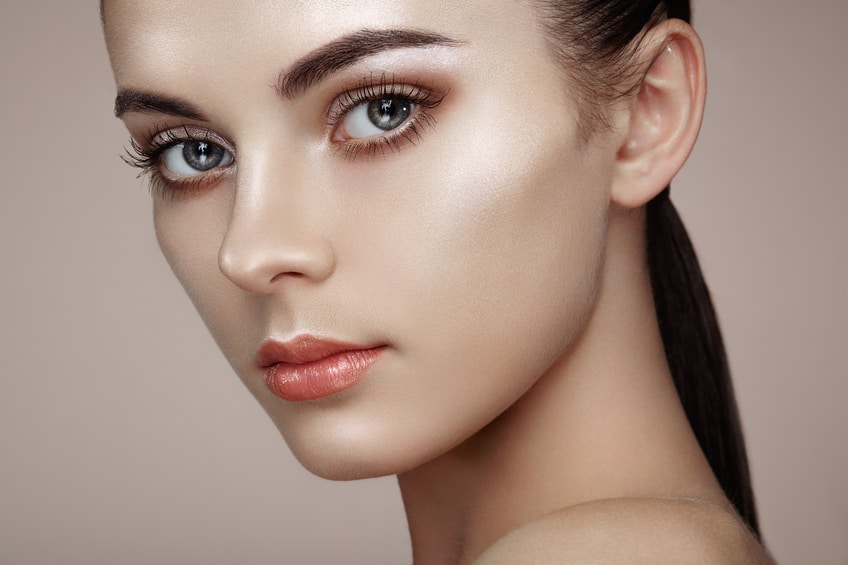
Just in time for summer, a new makeup trend is inspiring today’s makeup artists to swap their contour kits for something a little lighter. Strobing—also referred to as reverse-contouring or ‘non-touring’—is all about shining the spotlight on a face’s best features.If you love makeup and beauty, the right training program can turn your passion into a career in makeup artistry, and teach you how to artfully apply trends like these. Ready to achieve a truly professional-looking strobed makeup look? Read on.
What is Strobing? Ask Professional Makeup Artists!
“Strobing is just highlighting to the max,” explains celebrity makeup artist Kelley Baker. If you’re considering makeup courses, you probably already understand the power of a good highlight.
Maybe you’ve added highlight to beauty looks before, in combination with a contour to give your face those Kim K dimensions. Strobing is essentially a fancy name for skipping the cakey contour and strategically highlighting parts of your (or your future client’s) face that you want the light to hit most.“The idea is to accentuate the high points on your face, the places where the light should catch,” explains makeup artist and beauty blogger Afton Williams. “The outcome is the illusion of high cheekbones and strong features, with a glowing finish that makes your skin look radiant.”
Putting the Shine On: How to Strobe a Face with Makeup Artist School Training
To effectively strobe a face, you’ll need the right tools. In
makeup artist school, you’ll be able to get your hands on the best beauty brushes and blenders in the business.
Kelley says she personally likes to use a regular highlighting brush, but that smaller eyeshadow brushes can be great for applying highlight more precisely on smaller parts of the face and around sensitive eyes.

Makeup Diploma students practice their application techniques at IBI
As for highlight product formulations—once you graduate
makeup courses the skin-type you work with will determine which makeup products you should apply. If a client has oily skin, powder highlighting products are a better choice than liquid ones. On the other hand, dry skin-types do better with a liquid or cream highlighter.With the right tools under your belt, get your shine on by first moisturizing and priming the face of your future clients. Then dust generous amounts of loose illuminating highlight powder or liquid/cream highlight onto the following areas of the face:
- Upper cheekbones
- Brow bones (just under the outer half of the eyebrows)
- Inner corner of the eyes
- Centre of the forehead (between the brows, and just above)
- Bridge and tip of the nose
- Cupid’s bow
- Centre of the chin
Blend it into the skin with a beauty blender or the pad of your finger, and that face is strobed!
When Should Grads of Makeup Artist Courses Use Strobing on Their Clients?
Who doesn’t love a good shimmer? If you become a professional makeup artist, your expertise will ensure that anyone who wants to add a little pearlescent pop to their face can have it done right.For example, pros know that using highlight makes some features (like cheekbones) appear fuller and stronger. It can have the same effect when applied to the forehead and chin—not ideal for clients seeking to minimize the size of those parts of the face.Makeup artists also say that a fully-strobed face is best for those clients looking for a dose of dewy glam.“It’s a glam look, and it’s definitely better for photos and events when you want to get that J.Lo glow,” Kelley adds.

An IBI grad hard at work backstage at a fashion show




